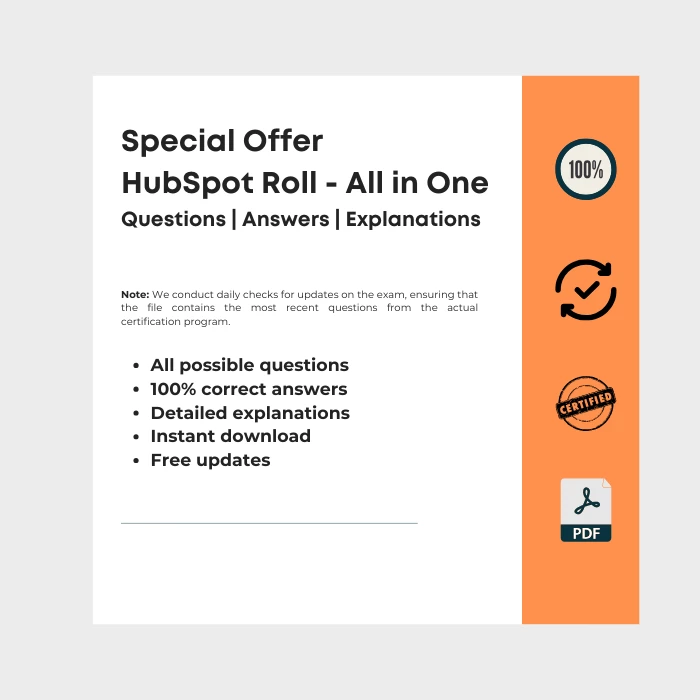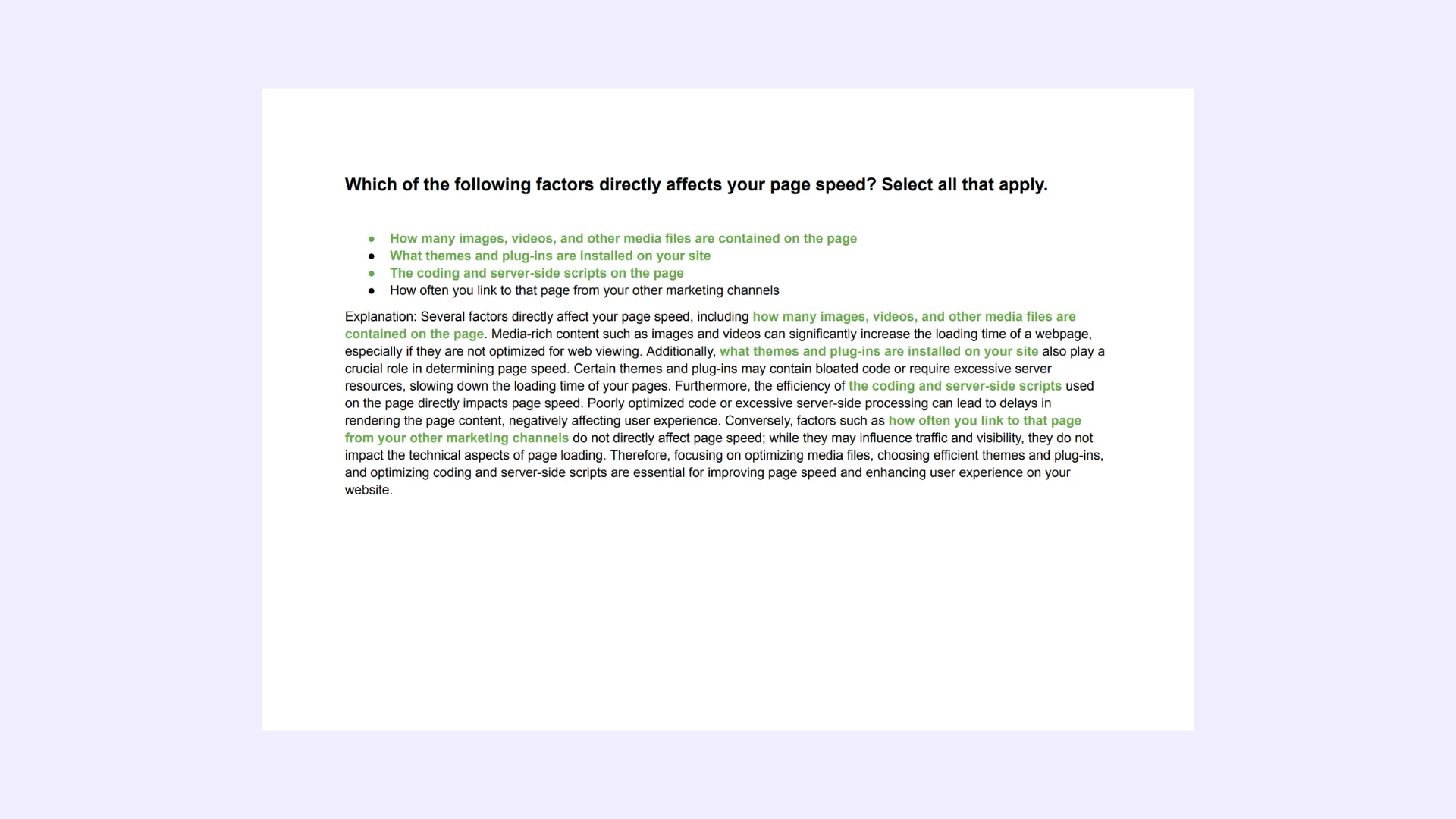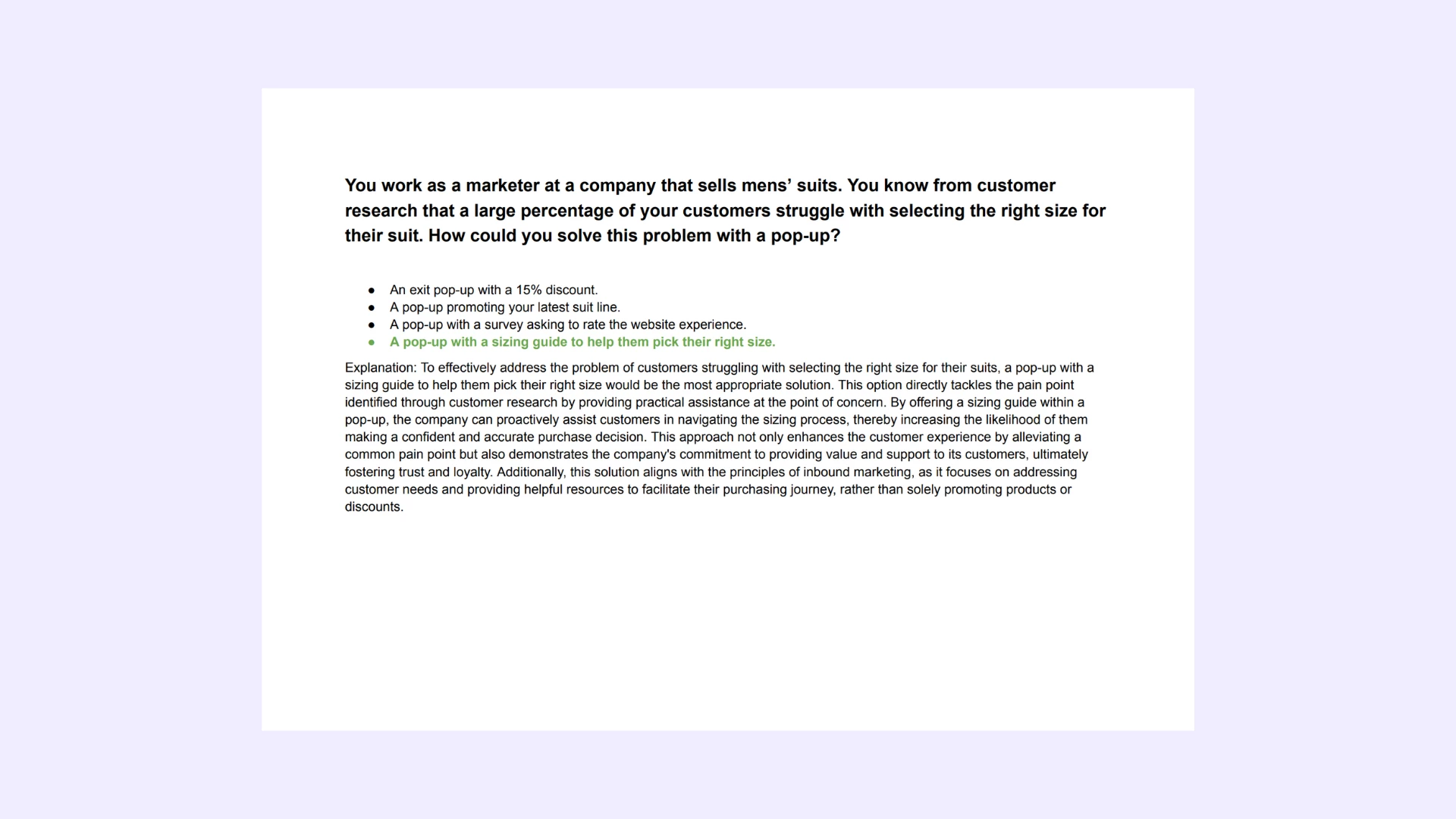Which of the following is true about an email template’s name?
The template’s name is the same as its subject line, so it needs to be short, clear, and focused on the recipient’s needs.
The name is only visible internally, so it should be whatever makes the most sense to you and your team.
The name is automatically generated and cannot be changed.
The name should be less than 30 characters in length.

HubSpot Roll. Includes Answers for Every Real HubSpot Certification Exam.
All-in-One: Get all HubSpot exams answers with explanations in one bundle. This package includes answers for every current HubSpot certification. Regular updates to reflect the latest exam version. -> See what's included.


Need a single cerification exam answers? Check out our -> list of certification exams answer keys. Learn Smarter. Obtain or Renew your certificates with peace of mind!
Explanation: Which of the following is true about an email template’s name?
Explanation: The correct answer is **The name is only visible internally, so it should be whatever makes the most sense to you and your team**. Unlike the subject line of an email, which is visible to both the sender and the recipient and should be carefully crafted to capture the recipient's attention, the name of an email template is solely for internal reference within your team or organization. Therefore, it should be chosen based on what is most logical and intuitive for your team members to understand and locate the template when needed. This internal naming convention can vary depending on the organization's structure, workflow, and naming conventions, allowing teams to organize and categorize templates efficiently for easy access and utilization. Since the recipient does not see the template name, its primary purpose is to facilitate internal communication and workflow management rather than to appeal to external recipients.

Special Bundle Offer HubSpot Roll. All in One
Note: We conduct daily checks for updates on the exam, ensuring that the file contains the most recent questions from the actual certification program.
Questions | Answers | Explanations. FREE Updates.
You may also be interested:
- Special HubSpot bundle offer - all HubSpot exams in one
- HubSpot CMS for develpers certification exam answers
- HubSpot CMS for develpers II certification exam answers
- HubSpot content hub for marketers certification exam answers
- HubSpot content marketing certification exam answers
- HubSpot contextual marketing certification exam answers
- HubSpot digital advertising certification exam answers
- HubSpot digital marketing certification exam answers
- HubSpot email marketing certification exam answers
- HubSpot frictionless sales certification exam answers
- HubSpot growth driven design certification exam answers
- HubSpot inbound certification exam answers
- HubSpot inbound marketing certification exam answers
- HubSpot inbound marketing optimization certification exam answers
- HubSpot inbound sales certification exam answers
- HubSpot integrating with HubSpot I foundations certification exam answers
- HubSpot marketing hub software certification exam answers
- HubSpot reporting certification exam answers
- HubSpot revenue operations certification exam answers
- HubSpot sales enablement certification exam answers
- HubSpot sales hub software certification exam answers
- HubSpot sales management certification exam answers
- HubSpot sales software certification exam answers
- HubSpot seo certification exam answers
- HubSpot seo II certification exam answers
- HubSpot service hub software certification exam answers
- HubSpot social media marketing certification exam answers
- HubSpot social media marketing II certification exam answers